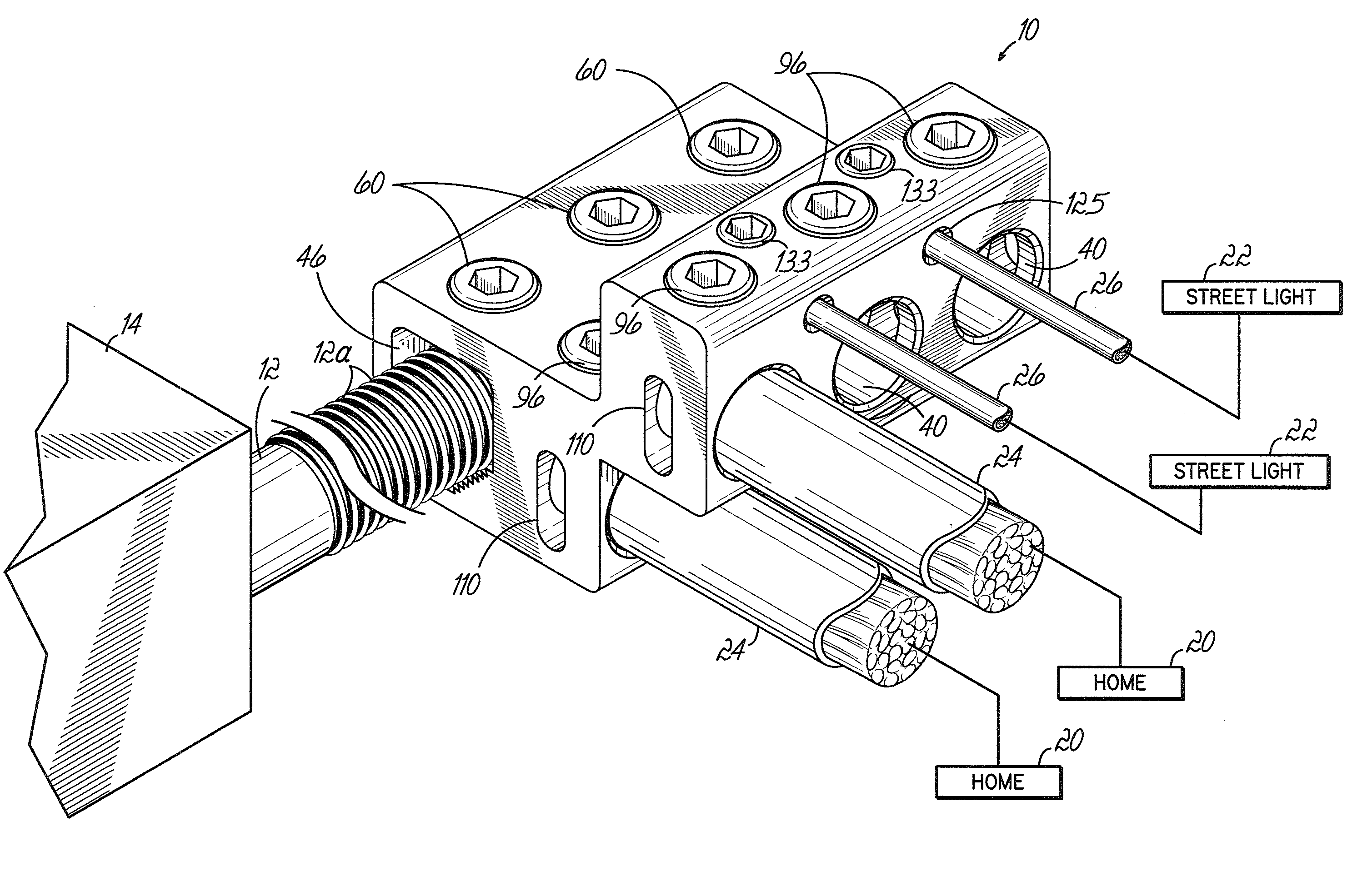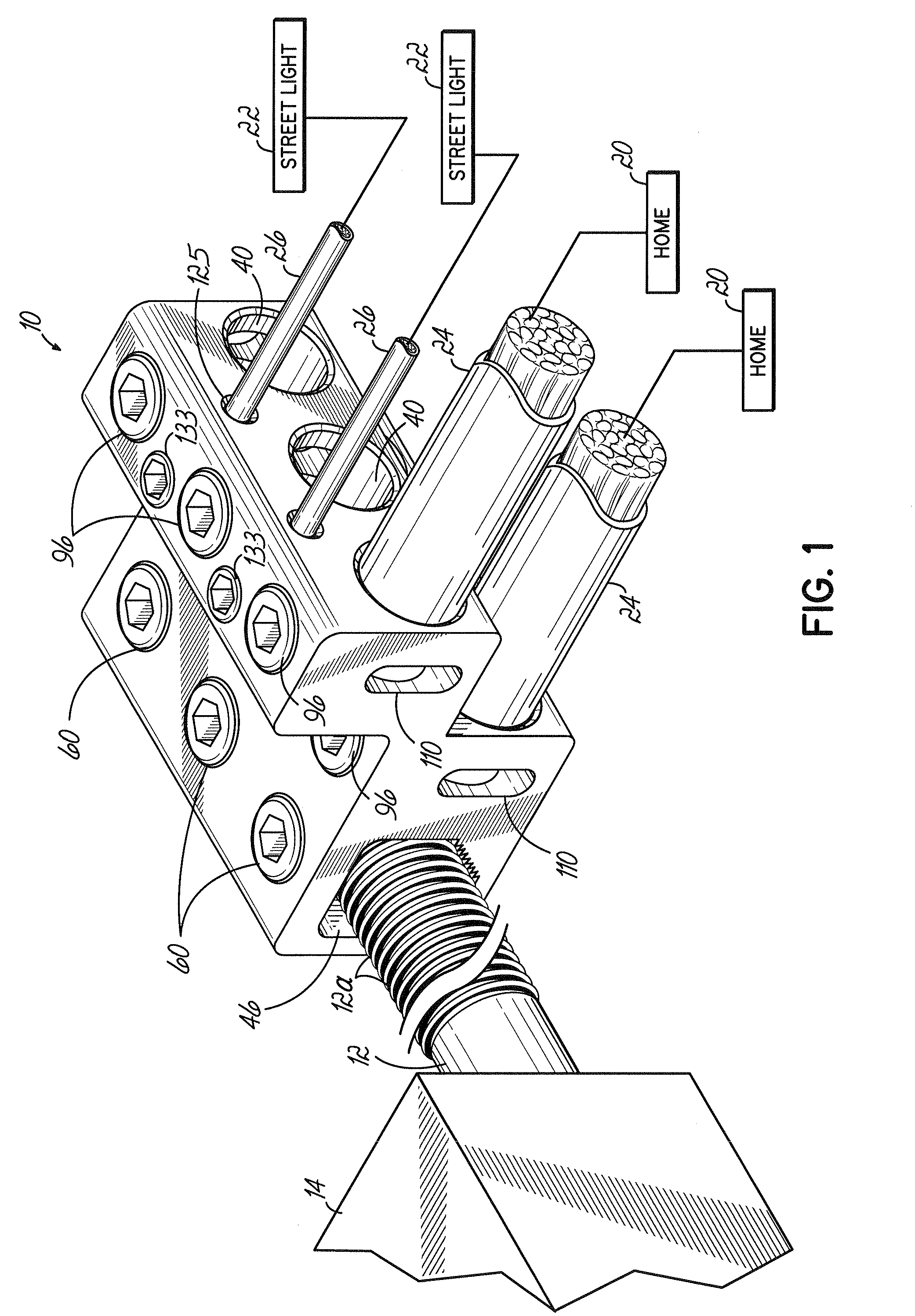Stud connector and related methods
a technology of connecting rods and studs, which is applied in the direction of transformer/coil connectors, electrical equipment, connections, etc., can solve the problems of affecting the conduction of electricity from the stud to the conductor, the loss of connectivity, and the inability to compensate for the loss of connectivity by threading the stud within the bor
- Summary
- Abstract
- Description
- Claims
- Application Information
AI Technical Summary
Benefits of technology
Problems solved by technology
Method used
Image
Examples
Embodiment Construction
[0026]With reference to the drawings and, more particularly to FIG. 1, a connector 10 is depicted connecting a stud 12 of a transformer 14 for conveying electric power to multiple power-consuming devices or systems. The connector 10 may, for example, convey electric power to homes 20 and street lights 22. In this exemplary embodiment, the connector 10 conveys electric power to homes 20 and street lights 22 respectively through conductors 24, 26 coupled to the connector 10.
[0027]With reference to FIGS. 1-2, the connector 10 in this illustrative embodiment is a generally Z-shaped structure having first and second body portions 30, 32, each of which is configured to connect to at least three conductors 24. To this end, each body portion 30, 32 includes three channels 40, each configured to accept a solid or stranded conductor 24 therein, as explained in further detail below.
[0028]Connection to the stud 12 is facilitated by at least one central bore 46 disposed within the first body por...
PUM
 Login to View More
Login to View More Abstract
Description
Claims
Application Information
 Login to View More
Login to View More - R&D
- Intellectual Property
- Life Sciences
- Materials
- Tech Scout
- Unparalleled Data Quality
- Higher Quality Content
- 60% Fewer Hallucinations
Browse by: Latest US Patents, China's latest patents, Technical Efficacy Thesaurus, Application Domain, Technology Topic, Popular Technical Reports.
© 2025 PatSnap. All rights reserved.Legal|Privacy policy|Modern Slavery Act Transparency Statement|Sitemap|About US| Contact US: help@patsnap.com



